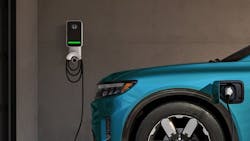Honda Investing $11B to Build EV Manufacturing Plant in Canada and Establish a Comprehensive Value Chain
Honda Motor plans to invest nearly $11 billion to build a comprehensive EV value chain in Canada and strengthen its EV supply system and capability to prepare for a future increase in EV demand in North America.
Honda has started evaluating the requirements for building a Honda EV plant and a stand-alone Honda EV battery plant in Alliston, Ontario.
The proposed Honda EV value chain will also include a cathode active material and precursor (CAM/pCAM) processing plant through a joint venture partnership with POSCO Future M Co. and a separator plant through a joint venture partnership with Asahi Kasei Corporation.
Honda expects electric vehicle production to commence in 2028. Once operational, the EV plant will have a production capacity of 240,000 EVs per year, and the EV battery plant will have a capacity of 36 GWh per year.
Honda will add a minimum of 1,000 new associates for the EV and EV battery manufacturing facilities while securing the employment level of 4,200 existing associates at its two existing manufacturing facilities in Ontario. Investing in the new facilities will also create significant spinoff jobs across all sites, including in the construction sector.
The process of evaluating the scope of investment and completing negotiations with Honda’s joint venture partners is expected to be finalized during the next six months.
Honda is also partnering with the governments of Canada and Ontario to progress in low-emissions manufacturing by accessing performance-based initiatives available through the federal government's new Investment Tax Credits and provincial direct and indirect incentives.
Honda aims to make BEVs and FCEVs represent 100% of vehicle sales by 2040 and will continue increasing the availability of these products globally, including in North America.
To help achieve this goal, Honda has positioned its existing auto production plants in Ohio as its EV Hub for production, including the retooling of existing plants - representing a $700 million investment - and the construction of a joint venture EV battery plant with LG Energy Solution, with an expected investment of $4.4 billion.
The Ohio EV hub will serve as the foundation for future EV and EV battery production, sharing knowledge and expertise with other Honda plants in North America, including the new EV assembly and battery plants in Ontario, Canada.
Additionally, Honda will establish a comprehensive EV value chain in Canada, including all aspects of EV production, from the procurement of raw materials for batteries to the production of finished EVs.
Honda will leverage EV production knowledge gained at the Ohio EV Hub, combined with the resources and clean energy available in Canada, to establish a stable supply system for batteries and increase the cost competitiveness of its EVs as a whole. Considering secondary use and battery recycling, Honda will realize low-carbon value creation throughout the entire battery life cycle.
About the Author
EnergyTech Staff
Rod Walton is senior editor for EnergyTech.com. He has spent 17 years covering the energy industry as a newspaper and trade journalist.
Walton formerly was energy writer and business editor at the Tulsa World. Later, he spent six years covering the electricity power sector for Pennwell and Clarion Events. He joined Endeavor and EnergyTech in November 2021.
He can be reached at [email protected].
EnergyTech is focused on the mission critical and large-scale energy users and their sustainability and resiliency goals. These include the commercial and industrial sectors, as well as the military, universities, data centers and microgrids.
Many large-scale energy users such as Fortune 500 companies, and mission-critical users such as military bases, universities, healthcare facilities, public safety and data centers, shifting their energy priorities to reach net-zero carbon goals within the coming decades. These include plans for renewable energy power purchase agreements, but also on-site resiliency projects such as microgrids, combined heat and power, rooftop solar, energy storage, digitalization and building efficiency upgrades.
